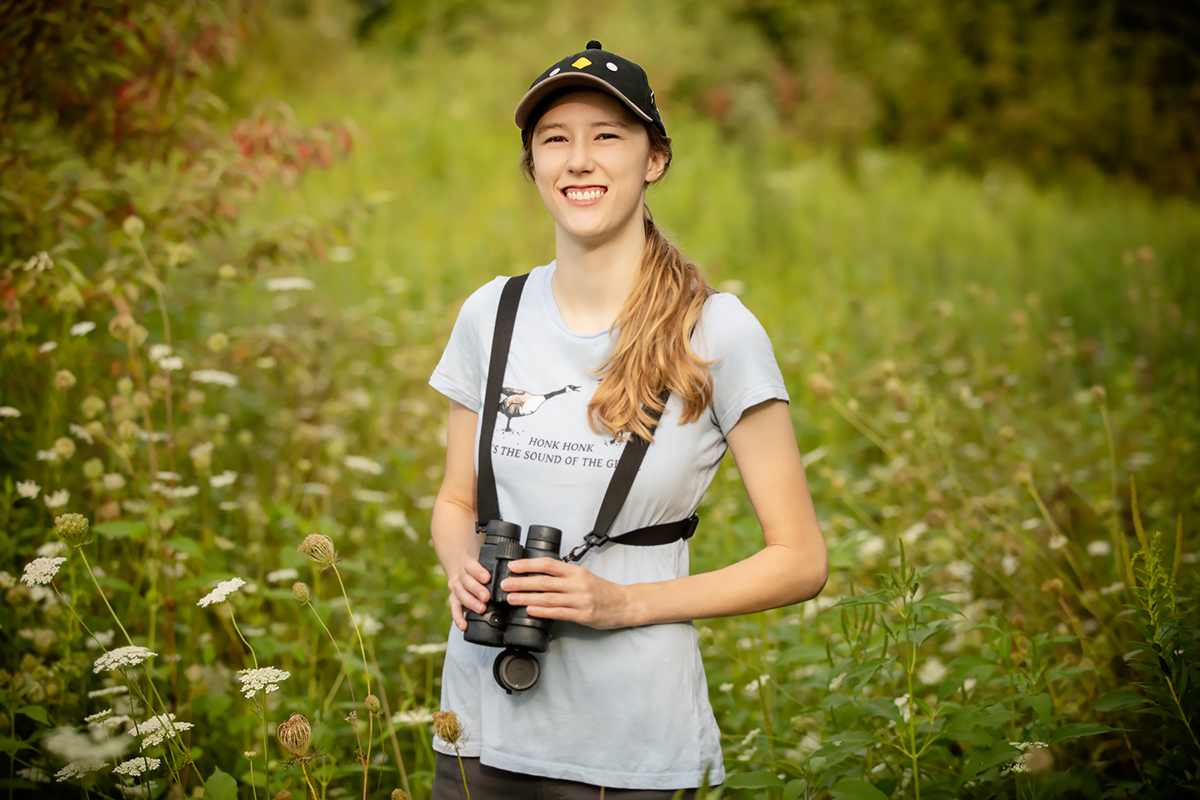
Shelby Lawson studies the vocalizations, behavior and neurobiology of birds. She is a graduate student of evolution, ecology and behavior, working in the laboratory of professor Mark Hauber.
Photo by L. Brian Stauffer
HERON COUNTY PARK, Ill. – It's early morning, about 6 a.m. A light fog has settled over the marsh. I park my car, step out and double-check my backpack for all the necessary equipment before heading out.
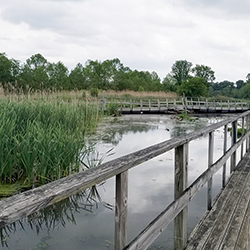
One of the sites of Lawson's field studies: Heron County Park, north of Danville, Illinois.
Photo by Shelby Lawson
After a short walk on a narrow paved path, I veer into the unmarked marsh. Water pools around my muck boots and a cacophony of bird calls rings in my ears. In the distance, I see a waving band of neon pink – a flag marking the location of a red-winged blackbird nest that my colleagues and I discovered yesterday.
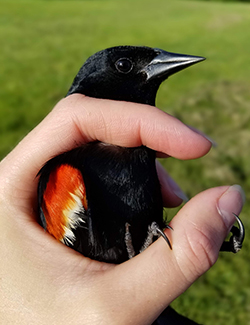
A male red-winged blackbird.
Photo by Shelby Lawson
I'm here to study how red-winged blackbirds respond to the vocalizations that signal nearby nest parasites called brown-headed cowbirds. The cowbirds seek to lay their eggs in these other species' nests and let the adoptive parents raise their young. But the host birds have evolved their own strategies for dealing with cowbirds. Yellow warblers, in particular, have evolved a special call, the "seet" call, that they use to warn each other that a cowbird is nearby. We think that red-winged blackbirds, who also get parasitized by cowbirds, might understand the meaning of this call, and actively eavesdrop on their yellow warbler neighbors to glean the information. My job is to study these interactions and measure the birds' responses to the calls.
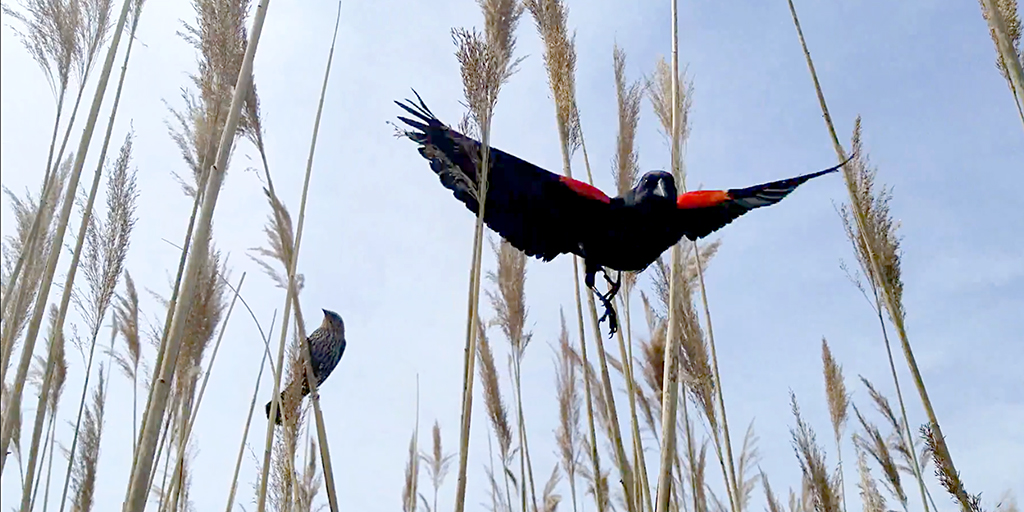
Red-winged blackbirds aggressively defend their nests. This airborne male swoops at the author while the female guards her nest.
Photo by Shelby Lawson
As I approach the nest, the blackbird parents begin making alarm calls and hopping between cattails around the nest. The male stares me down while flicking his tail and wings – a sign that I'm not welcome here. Red-winged blackbirds are among the most brash and vocal birds you'll ever meet.
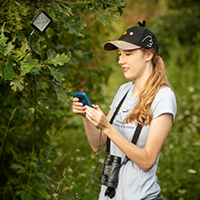
Lawson uses her phone to select tracks to play through a loudspeaker, then observes how the birds respond to the vocalizations of other birds.
Photo by L. Brian Stauffer
I find a suitable branch near the nest, unzip my pack and pull out a game call speaker to hang on the branch. I turn on the speaker, select a track and quickly hide nearby.
Notebook in hand, I watch as the blackbird parents, feeling the false lull of security in the silence, go back to tending the nest. The silence, however, is short-lived. Suddenly, the speaker blares out a series of cowbird calls.

Blackbird nestlings huddle together in the nest.
Photo by Shelby Lawson
The blackbird parents become frenzied, squawking their alarm calls. The male flies toward the speaker, looking for the threat. The female flits around the nest, focusing on her partner but also scanning her surroundings.
I record their behaviors in my notebook, including details about how long it takes them to respond, the number of calls each parent makes and their distance from the speaker. At the end of the season, I'll compare these numbers to their responses to other playbacks, including the yellow warbler seet call.
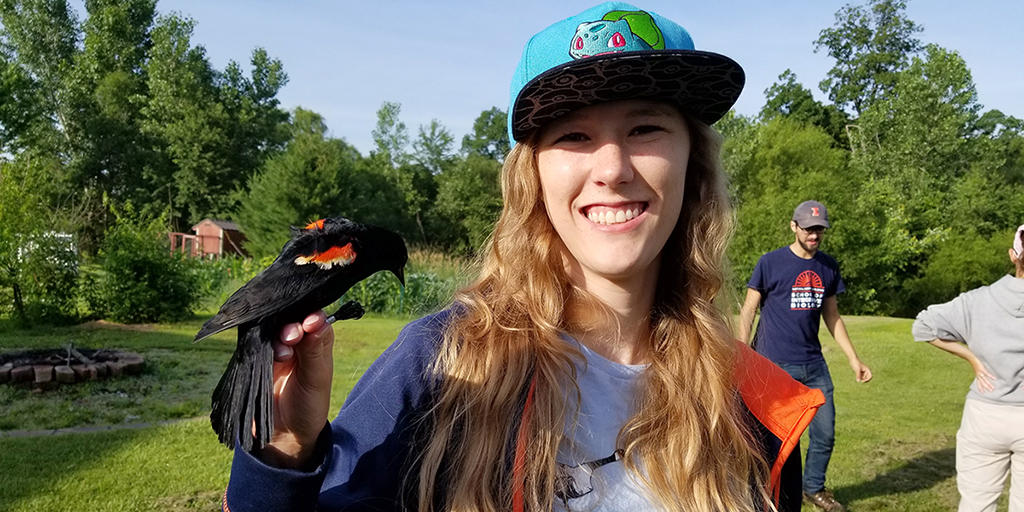
Field work sometimes involves capturing and banding study subjects, including red-winged blackbirds.
Photo by Janice Enos
It's incredible to see how aggressively these parents work to defend the nest from a perceived intruder. Yesterday, I presented seet calls to a different red-winged blackbird nest and the responses were strikingly similar. Their quick, aggressive responses paired with lots of alarm calls seem to support our hypothesis. But we have much more data to collect and statistical analyses to conduct before we can draw any conclusions.
I take notes for a few minutes until the playback finally ceases. Then I walk quietly to the nest to check its contents: four light blue eggs patterned with dark brown streaks and speckles – still warm. I make a mental note to add this information to the nest log once I give the parents some space.
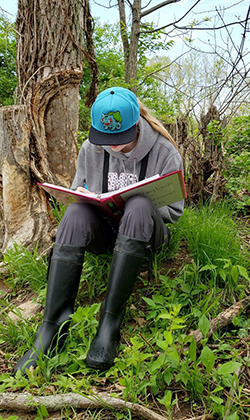
The author captures bird responses to vocalizations in her field notebook.
Photo by Niko Mendes
I quickly move away from the nest, and the parents begin to relax. After a moment, they return to watching over their territory and nest. The male perches on a tall reed, scanning his territory for the next threat; the female goes back to sitting on the nest and incubating the eggs. For them, this was a tense run-in with a cowbird that they successfully scared away. For me, it was another important data point for my experiment.
***

Two red-winged blackbird nests. The one on the right contains two blackbird eggs and one cowbird egg.
Photos by Shelby Lawson
At the conclusion of the study described above, my colleagues and I reported a new discovery – that red-winged blackbirds actually listen in when yellow warblers make seet calls signaling nearby cowbirds, and they respond similarly to seet calls and cowbird calls. In a recent study, we also showed that red-winged blackbirds change their responses to seet and cowbird calls based on whether cowbirds are currently a threat to their nest. Cowbirds can only successfully parasitize nests when the hosts still have eggs. After the eggs have hatched, producing nestlings, it's too late for the cowbird to sneak in an egg. We found that red-winged blackbird parents were more aggressive in response to seet and cowbird calls when they had eggs than when they had nestlings.
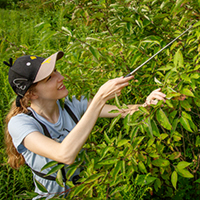
Using a mirror on an extendable arm, the author peers into a nest.
Photo by L. Brian Stauffer
The work is exciting because it demonstrates how different species use communication to protect their nests from threats like the cowbird. It also is a fascinating example of evolution, as blackbirds have evolved the ability to eavesdrop on another bird's signal and use it to their advantage as an early warning system for cowbirds.






